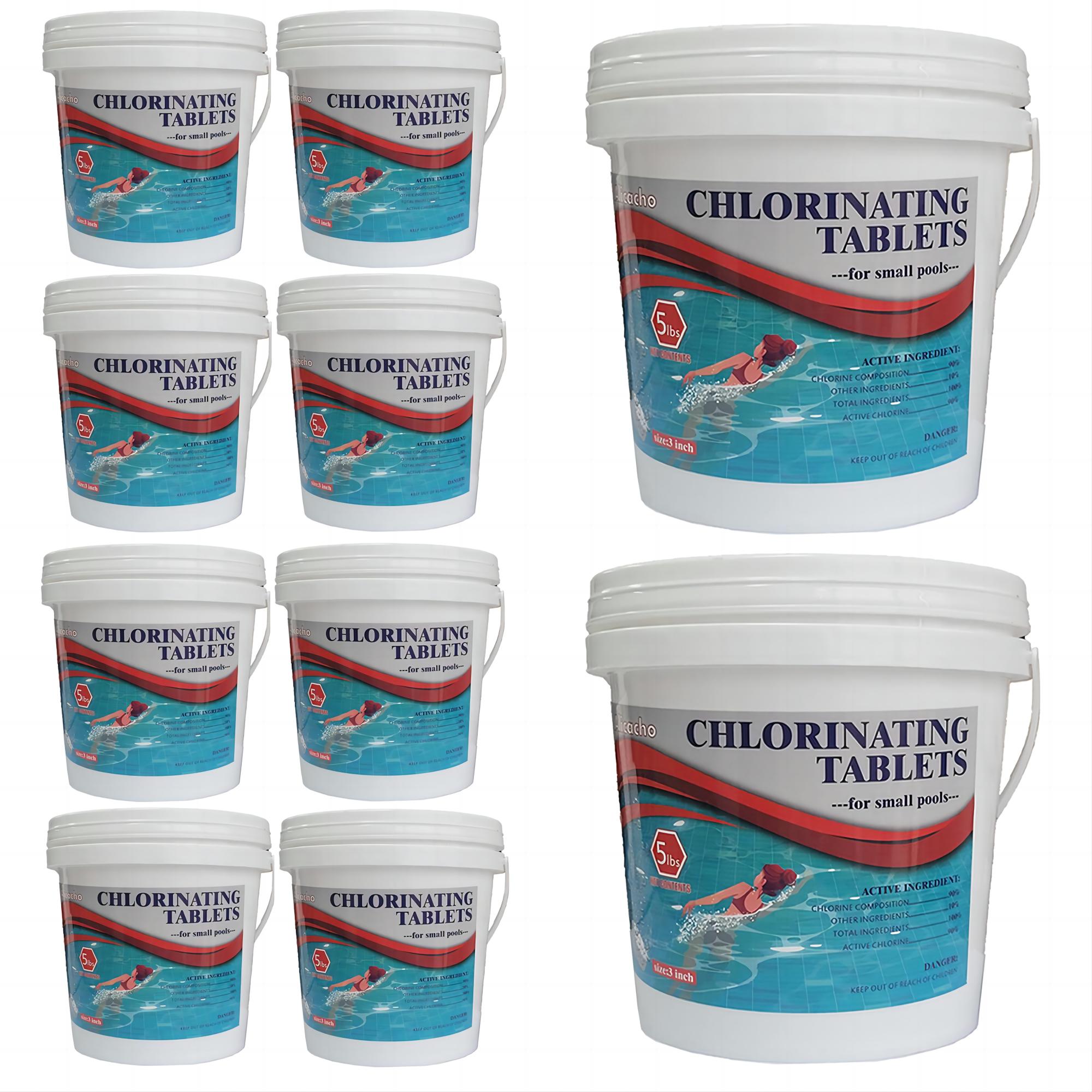Effective water treatment in hot tubs is crucial, and bromine and chlorine are two common disinfectants used to eliminate bacteria and viruses. However, there are significant differences between them. While chlorine dissolves rapidly in hot water, it's less stable, whereas bromine has a longer duration and requires less frequent use. Despite its higher cost, bromine excels at killing bacteria and viruses. In this article, we delve deep into bromine and chlorine, exploring their key distinctions and reasons for choosing one over the other. (Hint: the answer may differ for pools).
Part 1. Pros and Cons of Cleaning Spas with Chlorine
Pros:
-
Diverse Choices: Choosing the right chlorine product for hot tub water care is crucial. We recommend brands like PoolClever, which offer sodium dichloro-s-triazinetrione dihydrate with 60% Available Stabilized Chlorine in granular form and 1-inch chlorine tablets with 90% Available Stabilized Chlorine. The type of disinfectant best suited for your hot tub depends on personal preferences and specific needs.
-
Convenience: Granular chlorine is more convenient to use, as it can be added directly to the water, while tablet forms dissolve slowly and are typically used in floating dispensers.
-
Tailored for Hot Tubs: Sodium dichloro-s-triazinetrione dihydrate, unlike the commonly used trichloro products for pools, is specifically designed for hot tubs, offering effective disinfection without damage.
Cons:
-
Odor and Safety: Chlorine produces chloramines during the water disinfection process, resulting in a pungent odor, especially in the presence of heavy contaminants. Moreover, chlorine is a chemical substance that requires careful handling, including wearing protective gear to shield eyes, mouth, and skin from direct contact.
-
Shorter Lasting Effectiveness: Chlorine's effectiveness doesn't last as long, requiring more frequent use.
Part 2: Pros and Cons of Cleaning Spas with Bromine
Pros:
-
Versatility: Bromine's versatility makes it a long-lasting water treatment choice. It's not a one-time-use product.
-
Lower Irritation: Bromine causes less skin irritation compared to chlorine, reducing discomfort.
-
Extended Cleaning Duration: With bromine, the chemical is reactivated during the hot tub's "shocking" process, resulting in a longer cleaning lifespan.
Cons:
-
Higher Cost: Using bromine for hot tub cleaning is more expensive than chlorine.
-
Acidity: Bromine is acidic and can lower the pH value in the hot tub if not closely monitored, potentially causing damage to the hot tub's components.
Part 3. Bromine vs. Chlorine Hot Tub Comparison
The following table clearly summarizes the main differences between chlorine and bromine in hot tub water treatment:
| Characteristic | Bromine | Chlorine |
|---|---|---|
| Dissolution Speed | Much slower than chlorine | Dissolves faster and more popular |
| Temperature Stability | More stable at high temperatures | Less stable at high temperatures |
| Reactivity | Easily destroyed by UV rays | Is not affected by UV exposure |
| Skin Irritation | Causes less skin irritation | May cause skin irritation |
| Persistence in Water | Persists longer in water | Requires more frequent shocking |
| Water Clarity | Can produce cloudier water | Typically results in clearer water |
| Cost | Generally more expensive | Usually more cost-effective |
| Algae Control Efficiency | Less effective against algae | Better at controlling algae |
| Amount Needed | 3 - 5 ppm | 3 ppm (optimal) |
Part 4. FAQs
Is pH level an important consideration in the comparison of bromine and chlorine?
Yes, pH level is crucial when using bromine or chlorine in hot tubs. Maintaining the water's pH level between 7.2 and 7.8 is essential to ensure the optimal effectiveness of both chemicals.
Can chlorine and bromine be mixed?
No, chlorine and bromine should not be mixed, as they can react with each other and create hazardous chemical reactions, releasing toxic fumes and causing fires. Therefore, only one disinfectant should be used in hot tubs.
Can I switch from chlorine to bromine in my spa?
Yes, you can switch from chlorine to bromine in your spa. However, it's necessary to empty and clean the spa before making the switch, as chlorine and bromine should not be mixed.




